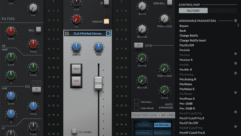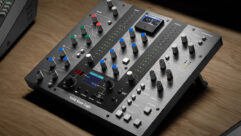Plug This!
Apr 1, 2003 12:00 PM,
By Sam Berkow
The professional audio community — now there’s a concept. The pro-audio community is a great example of market segmentation in the extreme — just look at the number of trade shows, trade magazines, and distribution channels targeted specifically to such segments as broadcast, post-production, live sound, houses of worship, staging, recording, home audio, audiophiles, and every other possible audio-related topic. Further, each market subdivision within the pro-audio community thinks that it’s special, the most forward thinking, and the coolest. That’s a problem.
Among the divisions within the pro-audio community, sound contractors and systems integrators have a special status: the contracting community supports almost every type of audio project, dealing with every type of gear imaginable. From consoles to speaker systems, installers deal with everything from the highest to the lowest in terms of performance and sophistication — and lots of it. It seems audio manufacturers would work to create tools that provide the most powerful and flexible solutions to the problems of contracting world. They do, as long as the product is entirely theirs. That is why the sound contracting community is falling behind the technology curve in the area of signal processing, and it is being led by companies serving — gasp — the prosumer market.
A review of the companies and products at the NSCA Expo show in Dallas illustrates a key point. Any number of dedicated digital signal-processing (DSP) boxes is available to the sound contractor. What started out ten years ago with MediaMatrix and was then followed by Soundweb (and then many others) has evolved into a competition of X-in by N-out boxes offering DSP functionality in an unlimited number of configurations at almost every price point. However, all of these boxes are essentially the same and are deficient in a key area: the portability of software they can run.
I dream of the day when I can use a software-based compressor — or ducker or automixer or reverb or analysis tool — or almost any software function from one company on a DSP platform from another company. Companies’ hardware platforms would vary in the amount of DSP power, I/O configuration, external control options, and basic software interface environment but would let users plug in third-party software, expanding the functionality of a unit immediately upon release. That would also take some pressure off of the companies to have to develop every possible audio and control function for every DSP platform. If this sounds like a dream too good to be true, it’s not.
The use of plug-in functionality, in both hardware and software, is a large and successful part of the gear widely used by both the prosumer and professional recording communities. Digidesign’s TDM and Steinberg’s VST interface standards allow third-party functionality to be added to even simple programs. I regularly run plug-ins from Universal Audio, TC Electronic, and others from within Wavelab (a great 2-channel recording and editing program) or Nuendo (a multitrack recording and mixing program). Unfortunately, I cannot use any of the hundreds of features available to plug in to these programs in my professional contracting gear. The quality of the plug-ins is not the issue; neither is stability. My plug-ins, both hardware and software, seem to be stable.
How did the prosumer and professional recording marketplace achieve a level of standardization and interconnectability that the contracting community has not enjoyed? A better question is why haven’t we, as a community, demanded this level of product openness? Certainly one reason is that, as a general rule, the sound contracting community tends to be cautious with new technology, and truly stable plug-ins are a relatively new phenomenon. Another issue is that many manufacturers serving the contracting market harbor a huge case of the “not-invented-or-sold-here-so-it-must-be-crap” syndrome, much to the detriment of everyone involved.
As DSP units have become the backbone of so many systems, sound contractors should look at the way plug-ins work in so many computer-based recording systems. Let’s urge the manufacturers to make at least partially open platforms a priority. If for no other reason, it would be nice if my X-thousand-dollar DSP box could offer the same functionality as my $300 editing program running on a simple PC with a set of plug-ins!
Sam Berkow is an acoustical consultant based in New York City, specializing in performance and production spaces. He is also partner in the Walters-Storyk Design Group and founder of SIA Acoustics and SIA Software. He can be reached, when not playing with plug-ins, at [email protected].










